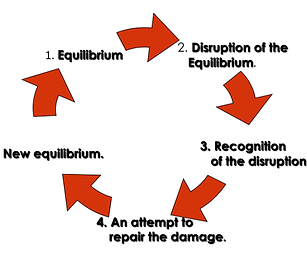Becca Case
A2 Media
In what ways does your media product use, develop or challenge forms and conventions of real media products?
Generally
-
Film production logo near the beginning
-
Film title usually at the end: font, colour, back drop gives the idea to the film genre
-
Age certification shown at the end
-
Website, twitter hashtags- social media encourages the audience to find out more about the film- effective advertising campaign
-
Character introductions- audience get pleasure from films by connecting and relating to the characters.
-
Music- show pace of film, genre & budget
-
Voice overs- guide the audience through the film plot and characters
-
Name captions- actors names, directors names or producers names
-
Usually more than one trailer- official full trailer 1:30-2 mins- teaser trailers 10-30 seconds- helps build hype
-
Release date is shown couple of weeks before the film is released- shown at the end
-
Titles- disclaimer which displays suitable audience for the film
-
Producers and distributers of the film
-
Parallel mood music which helps provoke emotion in the audience
-
Short clips of different parts of the film- cut transitions with fade to black
-
CU show emotion-helps with narrative.
Horror
-
Camera- CU/ECU
-
Low key lighting
-
Colours- red,black,white
-
Cut transitions
-
Low angle/high angle- connote fear
-
Minimal talking
-
Good vs Evil
-
Death
-
Abnormality
-
Music builds tension
-
Creates enigmas for the audience- entices them
-
Isolated areas
-
Dark, dreary atmosphere
-
Dramatic camera angles
-
Setting-woods, cabins, abandoned houses, graveyard
-
POV shots
-
Handheld shots
-
Ambient diegetic sound
-
Iconography- lighting is expressive & non naturalistic
-
Props/motifs- knifes, dolls
-
Protagonist- victim/hero
-
Themes- depression, religion, childhood issues, revenge, supernatural, madness, insanity
To the right is audio which explains the forms and conventions typically used in the horror genre and how our media products either conformed or at times challenged these conventions.


Torodov's narrative structure theory- as highligted in the audio step 5 (E) is not included in trailers and especially not in horror trailers.
Thisis the house where we filmed- as you can see in creates a sense of normality and the home/bedroom location is one that many recent horror films have used.






Conventional social networking that are used to help promote the film. These have come about in the past 10 years to enable more interaction between the target audience for the film.

As said in the audio age certificate ratings are key. For our trailer we decided to rate our trailer 15 as many other horror trailers have this age certificate or higher.




Here shows the variety of camera shots that are used within the horror genre. The slideshow shows a variety of close up and extreme close ups used in recent horror films as wells as a close up of our protagonists face showingb how we have conformed with these conventions.
Above is an example from the beginning of Insidious chapter 3 trailer which shows how a sense of normality is implemented at the beginning and highlights the fact that this normality factor can make the audience feel on edge at they always have a feeling that something bad is going to happen.
Above is an example of the Babadook trailer and the variety of shots used during the quick cut transitions towards the end of the trailer. As well as a video of clips from our trailer of the variety of shots used during these quick transitions.
This Babadook example also shows a normal aspect of everyday life- a parent reading their child a book however the images, diegetic and non-diegetic sound within this example proves to the audience that something abnormal is going to occur.